www.johntyman.com/peru/08.html
 |
CULTURES IN CONTEXT PERU The Incas and Prehistoric Cultures III: CHACHAPOYA CULTURE 3.5: Funeral Practices and 3.6: The Area Today |
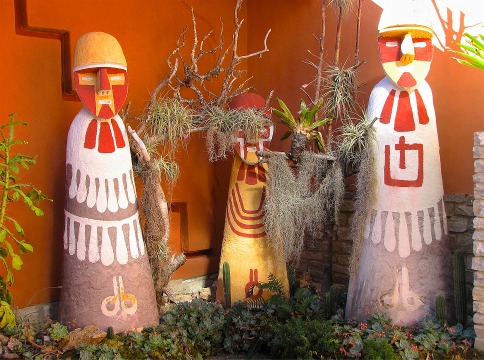
077. Two distinctive funeral practices were characteristic of Chachapoyan culture. One is represented by sarcophagi, placed vertically and located in caves that were excavated at the highest point of precipices. These imitation funeral bundles have been equipped with wooden masks. (Models of sarcophagi at the museum in Leimebamba) |
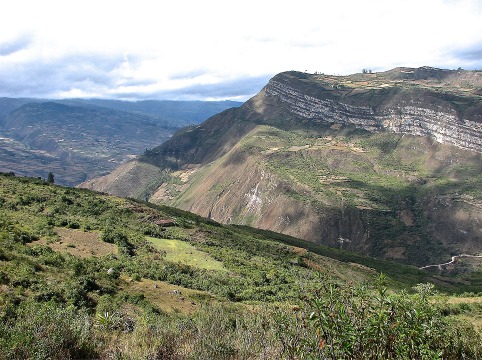
078. Elsewhere the Chachapoya built groups of mausoleums resembling tiny houses, located in caves excavated from the faces of high cliffs, which are difficult to access even today. (The approach to the mausoleums at Revash.) |

079. The preservation of human remains among the Chachapoya was, in itself, an extraordinary accomplishment in an area of high rainfall and high humidity. Most bodies were placed in cliff shelters protected by a rock overhang, and the resultant dry and cold microclimate helped preserve the organic remains. (Funeral bundles in the Museum at Leimebamba) |
080. They did not embalm their dead originally but selected areas with microclimates that enhanced preservation. Later, processes of embalming and evisceration were introduced by the Incas and were developed skilfully. |
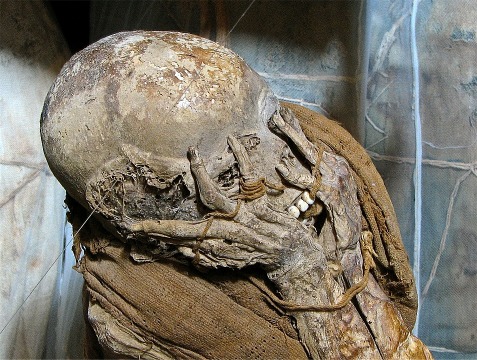
081. The skin of the embalmed mummies was tanned to preserve it, eventually turning it into leather. The organs were extracted through the anus to prevent rotting. They refilled these holes with cotton, and also stuffed cotton into the cheeks to maintain the body’s facial features |
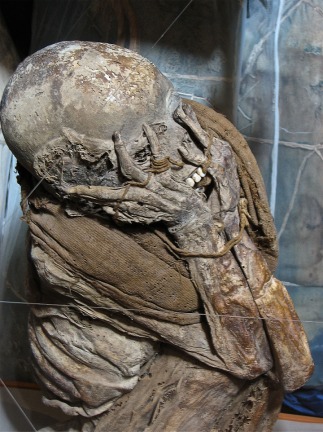
082. After a drying period, the corpse’s remains were bound together tightly in a foetal position and placed within a decorated cotton shroud. This technique allowed mummies to defy the centuries and they can be found with hair and teeth in good condition even today. |
083. The most accessible of the Chachapoyan mausoleums are those at Revash 50 kms south of Kuelap and overlooking the same valley. They were carved from a limestone cliff and resemble small houses grouped into miniature villages. |
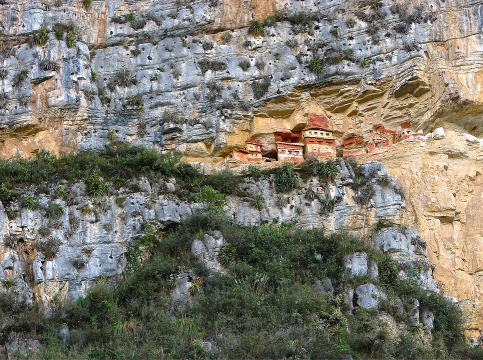
084. They are located in a straight line on a narrow shelf excavated in the wall of an imposing canyon. The walls of these “houses” are made of stones placed on mud mortar, and they have painted mouldings at the tops of the walls |
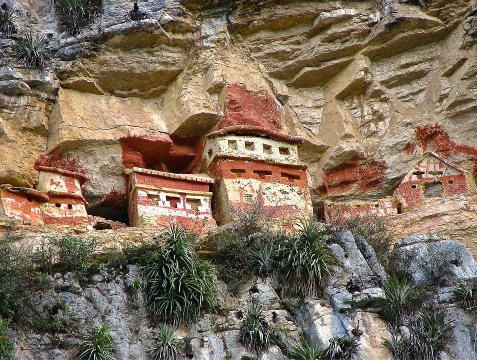
085. Each “house” has one or two rectangular floors; and instead of a front door, they have side doors. The cliff-face forms their back wall. The sloping roofs are purely symbolic, since they were protected by the overhanging roof of this man-made cave and were spared exposure to rain or sun. |
086. These funeral mansions remain almost intact except for the mummies located inside them, which were destroyed long ago by rodents and/or pillaged. From their size and degree of decoration, and their protective location, it is thought that these were a collection of residences destined to bury the rich and the powerful. |
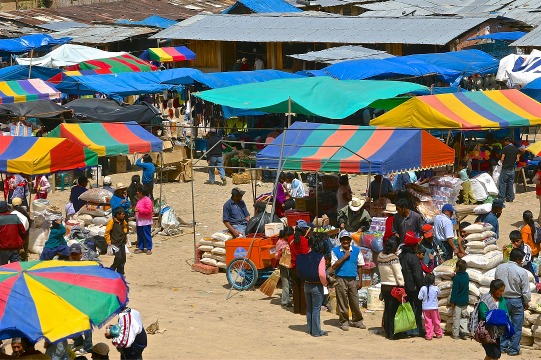
087. Close by Revash, the Sunday Market in the village of Yerba Buena offers a window into times past, when there were no department stores and people sold their own produce and bought most of their other supplies from neighbours. Hundreds of years ago the ancestors of these same people would have travelled here on foot. Today many still do, but others arrive on buses or in the back of trucks; and some come on horseback. |
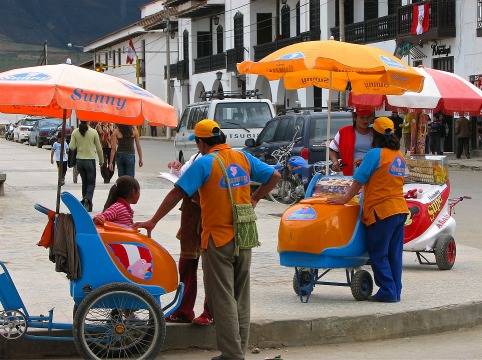
088. The city known as Chacapoyas today was founded by the Spanish following their conquest of the region. Its original name was San Juan de la Frontera de los Chachapoyas. (Centre of city during national holiday) |
089. On the east side of the city in Independence Square there’s a statue dedicated to the local heroes of the battle of Higos Urco in1821 which was part of Peru’s struggle to win independence from Spain. Sadly, little of the culture of the actual Chachapoyan people survived even then. |

090. The much earlier defeat of the Chachapoya by the Incas had been fairly swift; though smaller rebellions continued for many years. Using a system of ethnic dispersion, the Inca sought to quell these rebellions by forcing large numbers of Chachapoya people to resettle in remote corners of the Inca Empire. Any Chachapoyans who mix with the tourists here today will have travelled great distances. |
091. In much the same way, after Spanish soldiers arrived in 1547, effectively ending all vestiges of Chachapoyan independence, the occupants of Kuelap were relocated to Spanish-style towns and villages elsewhere: and disease, poverty, and attrition led to a dramatic decrease in population. By some accounts, following the arrival of the Spanish, the population of the Chachapoyas region decreased by 90% in the course of 200 years. (Leimebamba village.) |
![]()
Text and photos by John Tyman
Intended for Educational Use Only.
Contact Dr. John Tyman at johntyman2@gmail.com
for information regarding public or commercial
use.
![]()
www.hillmanweb.com
Photo processing, Web page layout, formatting
and hosting by
William
Hillman ~ Brandon, Manitoba ~ Canada